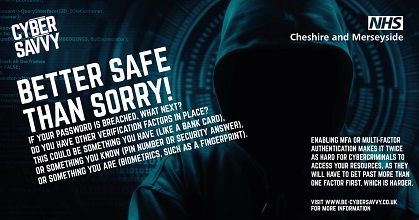How to protect yourself with Multi-factor authentication
Multi-factor authentication (MFA) is sometimes called two-factor authentication or two-step verification. No matter what you call it, MFA is a cybersecurity measure for an account that requires anyone logging in to prove their identity multiple ways. Typically, you will enter your username, password, and then prove your identity some other way, like with a fingerprint or by responding to a text message.
Once you have MFA set up, proving your identity usually adds just a second or two to the log-in process. MFA makes it extremely hard for hackers to access your online accounts, even if they know your password.
We recommend that you implement MFA for any account that permits it, especially any account associated with work, email, banking, and social media.
Different forms of multi-factor authentication
Multi-factor authentication can take several different forms, including:
- Inputting an extra PIN (personal identification number) as well as your password
- The answer to an extra security question like “What town did you go to school in?”
- A code sent to your email or texted to your device that you must enter within a short span of time
- Biometric identifiers like facial recognition or fingerprint scan
- A standalone app that requires you to approve each attempt to access an account
- An additional code either emailed to an account or texted to a mobile number
How does it work?
When you turn multi-factor authentication on for an account or device, your log-in process will require a bit more verification. You will be asked for your username and password.
If these are correct, you will then be prompted to prove your identity another way. You might be able to set up your smartphone, for example, to use a facial scan as verification. Other online accounts might send your phone number or email address a one-time use code that you must enter within a certain frame of time. Some accounts will require you to approve access with a standalone authenticator app like Duo or Google Authenticator.
Can multi-factor authentication be hacked?
Not every account and device offers multi-factor authentication, but it is becoming more common every day. You might already have it set up for your devices, like if you use a Face ID or fingerprint scan to unlock your phone or laptop. Here are some types of accounts that often offer multi-factor authentication.
- Banking
- Social media
- Online stores
Multi-factor authentication adds an entire layer of security on your important accounts beyond your password. Your data is precious and important – multiplying its protection is a great idea. Let’s use multi-factor authentication everywhere!
For more details about protecting yourself visit: www.be-cybersavvy.co.uk
